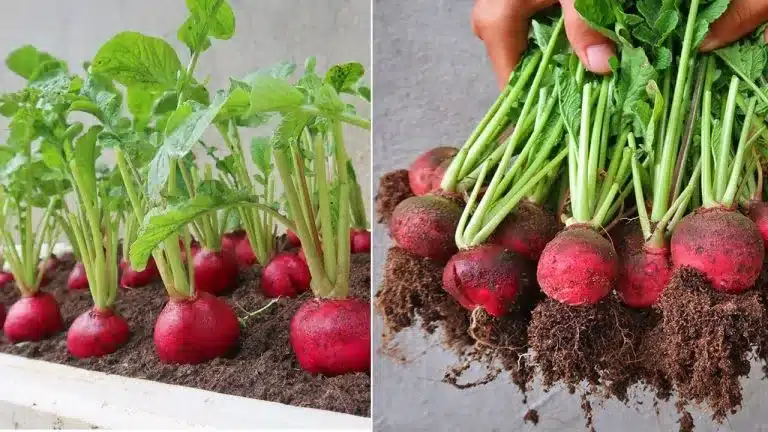How to grow red radishes for the coming winter, many tuber and very sweetCultivating Radishes: A Guide for Garden Enthusiasts
Radishes, with their crisp, peppery flavor, are a delight for both novice and seasoned gardeners. They grow quickly and don’t demand much space, making them ideal for small and large gardens.
These vibrant veggies come in two main varieties:
spring and winter radishes. Spring radishes are known for their quick growth in cooler weather, while winter radishes take longer to mature but offer a richer flavor and longer storage life.
Growing radishes is not only an easy gardening project but also a culinary adventure. The unique, earthy, and slightly spicy taste of winter radishes enhances various dishes, offering a refreshing twist to your cooking.
Follow these simple steps to grow and enjoy radishes in your garden:
1. Soil Preparation

For the best radish growth, prepare your soil with organic matter but avoid freshly added manure or materials high in nitrogen. Rich soil may lead to leafy growth at the expense of the root.
2. Planting Radishes

For spring radishes, sow seeds 4-6 weeks before the last frost date. Plant the seeds directly in the garden to avoid root disturbance. Sow ½ to 1 inch deep and 1 inch apart in rows 12 inches apart. Plant a new batch every 10 days for a continuous harvest. For a fall harvest, sow seeds 4-6 weeks before the first fall frost.
3. Radish Care

Thin your radish plants early to about 2 inches apart for optimal growth. Regularly water the plants, maintaining even soil moisture without overwatering.
Mulch with compost mixed with wood ash to deter pests and retain soil moisture.
4. Harvesting

Spring radishes mature quickly, often ready within three weeks. Harvest when roots are about 1 inch in diameter. Don’t delay harvesting, as the quality declines quickly after maturity.
Winter radishes can withstand colder temperatures and can be stored in moist sand in a cellar or under mulch in the garden through winter.
After harvesting, trim the tops and tails, wash, and dry the radishes. Store them in plastic bags in the refrigerator, and separate the greens, which can be stored for up to three days.
Wrap Up
This guide offers you an insightful approach to growing both spring and winter radishes, highlighting their unique growth cycles, flavor profiles, and storage methods. Whether you’re looking to diversify your garden or explore new culinary avenues, radishes are a splendid choice.
Remember, radishes are generally low-maintenance. They thrive in well-amended soil and usually don’t require additional fertilization unless the soil lacks organic material. With these tips, you’re all set to enjoy the crisp, tangy delights of home-grown radishes!

